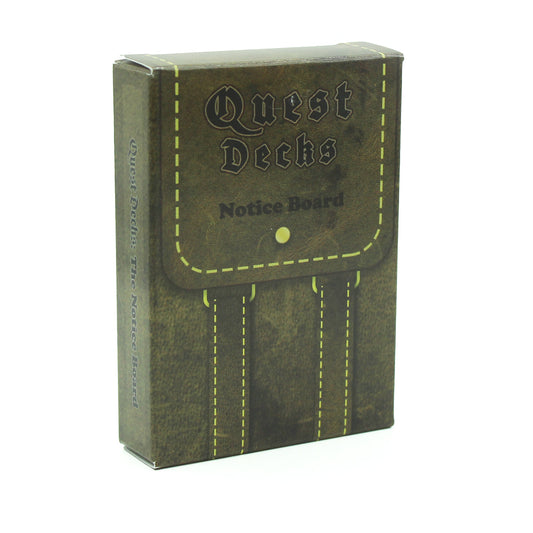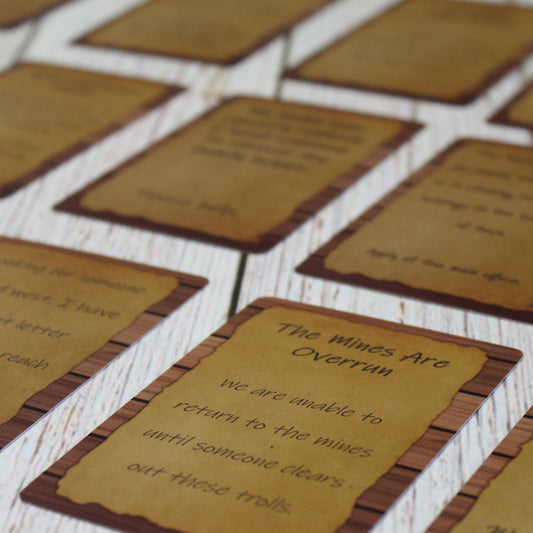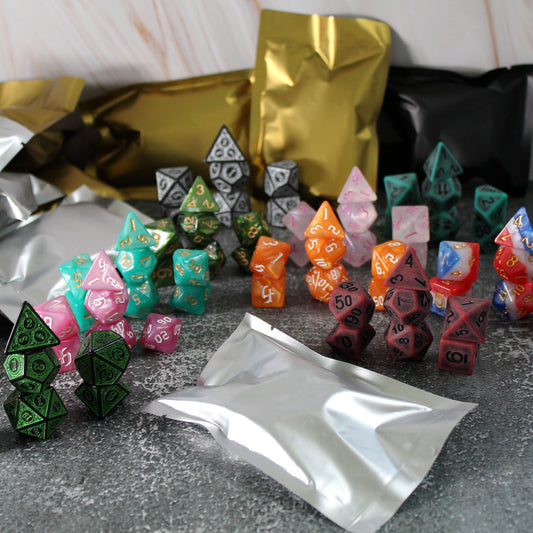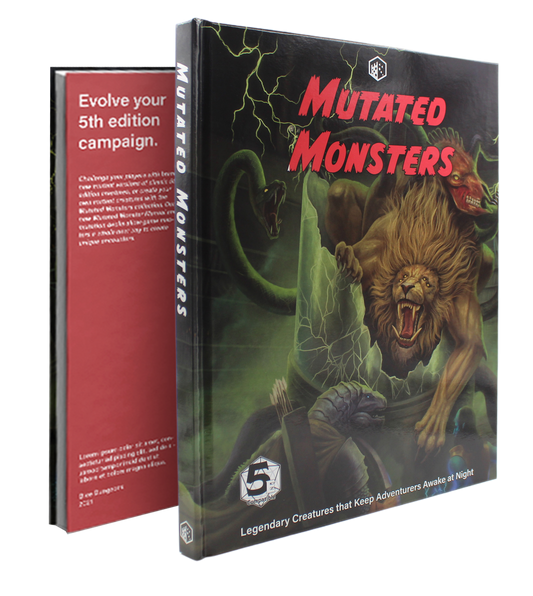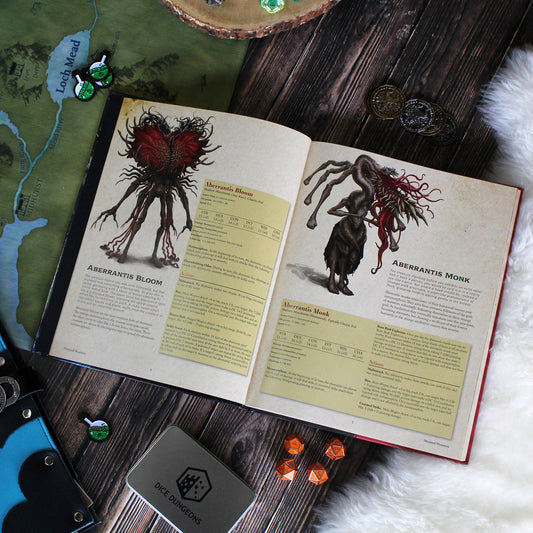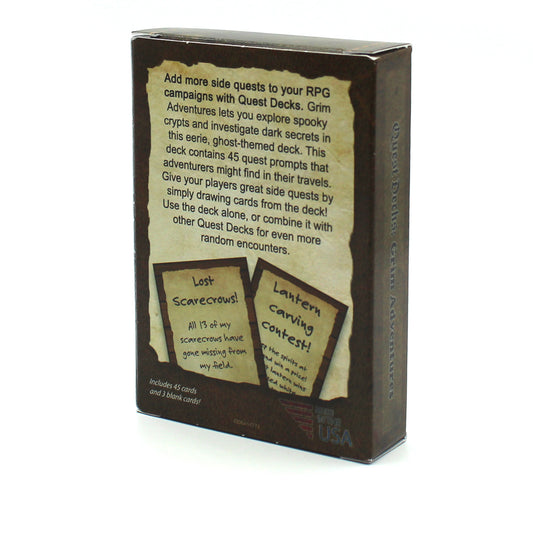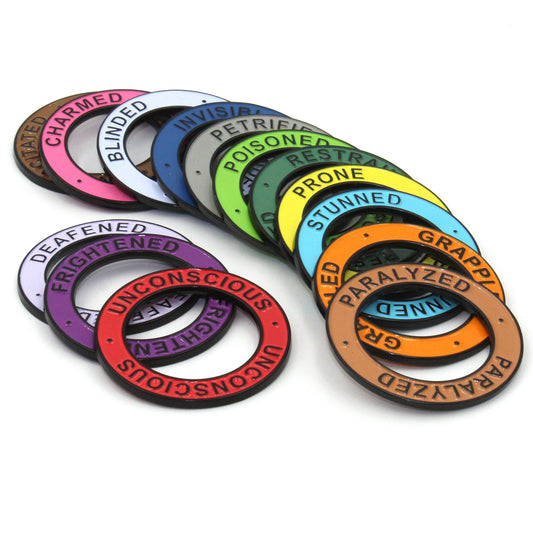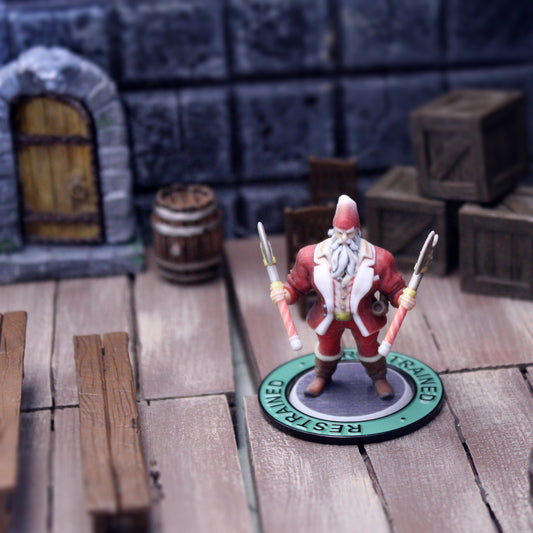Make a Better D&D Character With These 9 Suggestions
Your D&D character kicks ass… right?
Every D&D player thinks their character is great. I mean come on; you form a whole person from your own imagination. A little narcissistic? Maybe! But in the end you can’t help but be their biggest fan.
In fact, most people just assume their fellow players must feel the same way you do. You expect them to just “get it” and and say things like:

Why does no one else think you made the best D&D 5e character ever?
It’s not that your friends are jerks. They like you and like playing with you. They are even huge fans of other characters throughout fantasy and fiction. And yet, they only are mildly amused by this protagonist you put a lot of work into.
And on the flip side: why is it that YOU don’t get as excited about THEIR character?
This post is about helping 5e players make better D&D characters. Heroes that not only look good on paper, but actually resonate with both you and everyone at the table. Adventurers that are so engaging your fellow party members and DM will struggle to imagine a fun campaign without them.
And to keep it interesting, we will tackle the problem by first listing all thoughts people actually have when they play alongside our characters. You know, the thoughts and feelings they really have, but are way too nice to say?
It will be a bit more honest… more uncomfortable… but a lot more helpful. Jump to those thoughts by clicking here.
But first… what exactly is “good”, “great”, or “best” for D&D characters?
Table of Contents:
- The Key D&D Character Questions
- “Your character doesn’t fit with the party…”
- “Your D&D character isn’t any fun to interact with…”
- “It’s hard to imagine your D&D character…”
- “Your character hasn’t really changed…”
- “Your character doesn’t feel like a real person…”
- “You’re character doesn’t make any sense…”
- “I don’t relate to your character…”
- “It doesn’t feel like your character belongs anywhere…”
- “I don’t know why your character is adventuring…”
The Key D&D Character Questions
Before we talk about D&D characters, we need to talk about Dungeons and Dragons, specifically Fifth Edition. Otherwise our definitions of “good” will be so relative you’ll be inviting them to Thanksgiving dinner.
Now before everyone screams at me for putting D&D into a straight jacket… let me get a disclaimer out of the way:
In general, a good D&D character needs to fit its specific campaign.
If everyone is making joke characters for a silly one shot and you bring in a sulking rogue… well for THAT campaign… that is not a good character.
And if you are embarking upon an drama filled quest intended to last years with your baker bard named Pissyface McGee… well for THAT campaign… that is not a good character.
But in general, if you’re playing “D&D as it was intended”, you are going to come across some common tropes. The vast majority of campaigns are epic adventures in high medieval fantasy where characters become heroes who triumph over evil. That is classic… standard… basic… vintage… circa 1974 Dungeons and Dragons.
And classic DnD fits these three definitions:
- Dungeons and Dragons is a tabletop game that was originally inspired by tabletop wargaming and continues to have wargaming elements.
- Dungeons and Dragons is a tabletop role-playing game (TTRPG) that involves players pretending to be other characters and acting out as those characters as they explore a fantastic, magical setting.
- Dungeons and Dragons (Fifth Edition) is cooperative story-telling; players and Dungeon Master work together to tell a compelling and complete story.
Now that we know what good DnD is, we can answer the most basic questions about what makes a truly great DnD character:

What is a good D&D 5e character? A good D&D 5e character is one that can meaningfully contribute in combat, is fun to role play, and can develop as a character and contribute to the growth of other characters in the party.
Why make a good D&D 5e character? Since you can only play the game through your character, it is important you create a character that can mechanically make an impact and is interesting for you to play.
How do you make a good D&D 5e character? Players can make good, well-rounded D&D characters when they take their time, use their imagination, and thoughtfully answer the right questions.
Where can I get help making a D&D 5e character? The Player's Handbook walks players through the process step by step in Part 1. Several websites can pregenerate some of the mechanics. Others clarify what works and what doesn’t, or help you come up with the physical description, personality, and backstory.
Who makes good D&D 5e characters? Lots of players and maybe even you! But for specific examples, just about every D&D live play is going to have an example of a good D&D character. Some notable examples include Jester Lavorre from Critical Role Campaign 2, Takko from The Adventure Zone, and Binwin Bronzebottom from Acquisitions Incorporated.
We have set our sights on the finish line… and now we need to move from the general to the specific and put our ideas to practice. And sometimes it is easier to focus first on what not to do…

Looking for side quests that fit your specific campaign?
If so, you must see our “Quest Decks”!
The Bad Stuff People Say About your D&D 5e Character
Your friends may be ambivalent about your D&D character, but they might not know why. It probably is a gut feeling they haven’t given much thought to. I’m going to put words to the negative-leaning thoughts and feelings players might have about your current and past D&D characters so that we can understand how to make them better.
Also, a lot of the solutions correspond with the sections on the D&D character sheet. So if you want to follow along, be sure to download one here.
- “Your character doesn’t fit with the party…”
- “Your D&D character isn’t any fun to interact with…”
- “It’s hard to imagine your D&D character…”
- “Your character hasn’t really changed…”
- “Your character doesn’t feel like a real person…”
- “You’re character doesn't make any sense…”
- “I don’t relate to your character…”
- “It doesn’t feel like your character belongs anywhere…”
- “I don’t know why your character is adventuring…”
“Your D&D character doesn’t fit in the party…”
 We’ll start with the easiest and smallest problem facing players: mechanics. First thing most players do is choose weapons and spells and understand all the abilities of their characters. They think through how their armor protects them more than where they got their armor or what their armor looks like.
We’ll start with the easiest and smallest problem facing players: mechanics. First thing most players do is choose weapons and spells and understand all the abilities of their characters. They think through how their armor protects them more than where they got their armor or what their armor looks like.
And this… makes sense. Dungeons and Dragons has its roots in wargaming. And if your character cannot fight or help overcome a well-balanced CR conflict, then they are not a very good character.
A good D&D character is mechanically balanced so they can contribute to the adventure.
D&D is not “tabletop improv” but a GAME with rules. And while “winning” is hard to define in D&D, you can certainly lose (e.g. TPK). So make sure your character is two things:
- they can hold their own in a fight
- in a fight they do different things than everyone else in the party.
(A party of all barbarians is going to have a hard time with a flying blue dragon).
“Your D&D character isn’t any fun to interact with…”
Sometimes a D&D character isn't bad, just boring… which I would say is also bad… so actually still bad. And just like being stuck at the boring table ruins a wedding, so too is a D&D campaign a lot less fun when it is full of boring characters.
Now don’t worry: you do not have to give your character the overwhelming, energetic, impossibly annoying personality of a Youtuber eager for ‘likes and subscribes’. Fun fact: introverts and socially awkward nerds have close friends that enjoy their company!
A good D&D character that is fun to interact with is interesting.
Just like in real life, the foundation for an interesting 5e character is their personality: the qualities and characteristics that make them distinct. In my opinion, the characters from the Mass Effect video games are the gold standard: creative, unique, interesting… but not too complex or deep. Here are a few tips to form he best D&D character personality:
- Start with the background: Every player is told to choose a background for their DnD character. These backgrounds have minor mechanical benefits but ALSO have suggestions for personality. They are helpful options… use them!
- Select multiple personality ideas from multiple backgrounds: No one is saying you can only choose one from the background personality list. As long as they don’t contradict one another too much, the more the merrier.
- Make them stand out socially: Give your D&D character one or two unique ways they interact with NPCs, enemies, allies, and/or party members. Whether humorous or just awkward, give them a strange social quirk that no one else does.
- Give them secrets: You can have all sorts of reasons for your D&D character's behavior, but keep it a secret… curiosity is a powerful lure! Players will be interested because they want to discover WHY your character became the way they are.
- Base them off someone famous: Yep…just steal from someone interesting in the world. Not too creative, but it can be really fun, and you can make little adjustments to make them your own. Just ask my crossbow wielding rogue, San Holo...

Fun and interesting side quests are important too.
“It’s hard to imagine your D&D character…”
Maybe you have never described your character in detail or maybe it's been so long since you did that everyone has forgotten. Maybe you just gave them a general description and hope your custom detailed mini and voice-acting will do the rest.
Regardless, your character is “bad” because your D&D character is hard to imagine…which is a problem when DnD 5e takes place in everyone's collective imagination.
A good 5e character is visually distinct and their image refreshed.
Give them something visually unique: clothes, hair, scars, demeanor, etc. If they are a cleric, give them one thing that would make them stand out if they were in a line of other clerics. Just like the main character in an anime.
But for lots of players the problem isn’t a lack of a clear description… it's a lack of a regular description. Imaginations don’t linger… don’t assume they will just ‘remember last time’. You need to quickly and repeatedly describe your character to refresh everyone's imagination.
So anytime your D&D character does something, don’t just describe what they do, describe what they look like doing it! Weave an image of their body, fantasy race, armor, etc. into your description of their actions.
“Your character hasn’t really changed…”
 A lot of people build their D&D characters like 90’s video game characters that, apart from some new stats or magical weapons, never change. The moment your character picked up a sword following their family dying in that farm fire… they became a hero…
A lot of people build their D&D characters like 90’s video game characters that, apart from some new stats or magical weapons, never change. The moment your character picked up a sword following their family dying in that farm fire… they became a hero…
But here's the thing: you are playing a tabletop role playing game that emphasizes shared storytelling. A compelling story needs engaging characters that grow. The story your table is telling is probably a heroic journey, which means the character should be transformed as the story progresses.
But your character is already whole… and has no reason to change or be changed by their heroic journey.
A good 5e character overcomes their flaws and needs.
Your DnD character should go on an adventure because they have problems they cannot solve and needs they cannot fill in the normal world. And as your Dungeon Master places challenges in their path, your DnD character should learn about themselves, discover flaws, and gain the tools necessary to overcome.
In my opinion, the 5e character sheet falls flat here… the flaws it mentions are like “I gamble too much”, and that is not existential enough: its the symptom, not the disease. You want flaws that require therapy and needs so strong they are compelled to venture into the depths of the Nine Hells to meet them.
One way to discover flaws and needs is to work backwards: imagine what kind of hero you want your DnD character to be at level 20 and subtract qualities. Or look into personality tests like the Enneagram, finding the number that you think best reflects your character, and draw inspiration from there.
And don’t worry: you don’t need to come up with the solutions to your character’s flaws and needs! Even if your campaign is all improv, over the course of the adventure, your DnD character will face trials that will push them to the limit and force them to grow…or die trying…
“Your D&D character doesn’t feel like a real person…”
Congratulations: you have created one awesome 5e character! They can support, defend, socialize, sneak, nova, and, somehow have a spell for every situation. It took a whole lotta effort balancing all those mechanics, but now you’ll always be three steps ahead.
The problem? Humans care about a lot more than just surviving and fighting. And by creating the most efficient character possible, you created something more akin to a robot rather than a living, breathing person.
A good D&D 5e character is more than the sum of their mechanics.
D&D 5e is a TTRPG, not Warhammer 40k. Your character is more than a tool you use to win combat encounters, they have “useless” functions too. Here are a few ways to give them some work/life balance and make them feel less like a Terminator murder-hobo:
- Give them fun equipment! Your DnD character’s background and class will often come with non-essential equipment like sentimental items, instruments, or gaming sets. Give things for your character to do to pass the time around a fire under the stars.
- Give them tastes! What kind of styles do they prefer? What about food? Or jewelry? Or things they can collect? These are unimportant things your D&D character can look for and value in your DM’s world that will add some flavor to your character.
- Give them hobbies! What do they do for leisure during their downtime? What activities have no adventuring value and simply bring them joy? Wizards of the Coast just released Unearthed Arcana on Downtime, and I recommend you check it out!
“Your character doesn’t make any sense…”
Admittedly, this is a weird one. After all, it's a fantasy world where people debate what color a tiefling can be, and whether tieflings have hooves or feet, and whether tieflings are evil or good… and all sorts of other debates surrounding tieflings.
But this is more a feeling than a thought people have… when they consider your DnD character, it kinda just doesn’t sit right with their gut. They may like your character, like what you do with them or how you roleplay, but they have a sort of uneasy feeling about them.
The reason they feel this way is because too many of the choices you made when you created your 5e character conflict with one another. Sometimes it is really fun to play a 5-year old ballerina with a battle axe or a cloistered mage who is a flirt… but sometimes things feel weird when they don’t match.
A good D&D character matches mechanics to their class and personality.
Consider having the class, race, and personality fit together. Are you playing a stubborn dwarf? Then maybe a creative, free-spirit Bard isn’t the best idea. Are you playing a vengeful dragonborn? Then maybe consider something other than the tree-hugging druid.
Does this mean that the best D&D characters are the ones that fit the stereotype? Not at all! Drizzt Do’urden is probably the most popular D&D character ever, and he is the exact opposite of his race.
But a lot of his other elements of his character compliment rather than contradict one another. Overall, as you create your DnD character, you want one thing to logically lead to the next. So if you make a forest ranger won’t wear bright pink or a druid wear heavy armor, it might feel… off.
Our “Quest Decks” help travel make sense
“I can’t relate to your D&D character…”
This one is tricky because it is so vague… I mean, how many tragedies do you have to put into their backstory and quirks into their personality before they are relatable!??!
The much maligned alignment system of fifth edition helps, but it's not enough; it often lacks nuance and is too restricting. It also does not get to the bottom of WHY your character has that alignment.
In the D&D world, good and evil are real, tangible things. In the Forgotten Realms, if it's found in Mt. Celestia, then it is good! If it's in the Abyss, then it's evil. And your D&D character indisputably has a soul… and souls are moral entities.
A good D&D character is a moral one; they have values/virtues and struggle with vices.
Virtues are qualities that align with goodness, and vices are qualities that deviate from goodness. Every human experiences all the vices and all the virtues… albeit in different ways and to different degrees. You can go with the classic seven deadly sins and the seven cardinal virtues, but I find the following chart more helpful:

Pick a virtue your character naturally exhibits and one they are trying to cultivate. Then pick at least one vice of excess and one vice of deficiency. It can also be good to have them aware of one of their vices but oblivious of the other one. These vices can overlap with the flaws they overcome along their heroic journey, but they are not necessarily the same thing.
Why go through all this effort?
Because people don’t become friends with people who are perfect; they become friends with people who have values and share struggles. So it doesn’t matter how noble or soft-hearted your hero may be; if you want them to be a good D&D character… a character that people can relate to… then you have to give them a shadowside full of moral struggles.
“Your D&D character doesn’t really fit anywhere…”
In the same way that babies don’t just appear out of thin air, your character didn’t just appear in the world. Even if they are demi-god messiahs, they had parents, came from a land, and had a culture.
Unless, of course, you never asked the DM questions about the world as you created your character. Instead, you created a character that can kinda fit in any world. And… in the spirit of Syndrome from the Incredibles… if they can fit anywhere, then they fit NOWHERE (cue evil laugh).
A good D&D 5e character is grounded in the campaign’s setting.
This is why the character sheet has “Bonds” and “Allies and Organizations”. You will add to these sections over the course of the campaign, but at the very beginning there should still be something there. Why? Because you want to anchor your character in the fantasy world.
Don’t worry: you don’t have to think of all this stuff on your own! It’s your DM’s world after all, and I’m sure they won’t mind your help and input. Tell the DM what kind of character you are wanting to create and where that character would go best. Then work together with your DM and integrate your character into the culture of that part of the world.
“I don’t know why your character is adventuring…”
Dungeons and Dragons is a tabletop role-playing game, and RPG’s are all about leveling up, becoming more powerful, and getting cool stuff. But when players focus entirely on the RPG element and not on the storytelling element, they often reduce their character’s motivation for going on quests to “I want money”. Even if they need money for that shiny new set of armor, they still care about a lot more than money.
And while that is a simple, effective motivation, it is also a boring one. And it is one that doesn’t make as much sense when the money is in a deathtrap like the Tomb of horrors or sitting underneath an ancient red dragon.
A good D&D character has a backstory that compels them to adventure.
Yes, at last… we FINISH with the thing most players start with… the backstory.
Your character is a person… a person with thoughts, feelings, tastes, hopes, dreams, fears, etc. And it is important that you flesh out everything you want in your character BEFORE you decide how they become that way. Trust me, it is a lot easier.
So give them a good backstory deserving of a person! It can be pages and pages long, but honestly 3 paragraphs is plenty. It should explain how they went from being a normal subject in the realm to the adventurer they are today. How have their virtues gotten them places, and how have their vices gotten them into trouble? When did they become aware of their flaws/needs?
It should include any tragedies, prophecies, or villains that the DM can exploit (I mean “use”) throughout the campaign.
Conclusion:
 You can pick and choose what you feel your DnD character needs… but when you combine them all together, you get something special! A great D&D 5e character is:
You can pick and choose what you feel your DnD character needs… but when you combine them all together, you get something special! A great D&D 5e character is:
Like These Suggestions? We have a bunch for DM’s too!
Shop our “Quest Decks” for the side quests that will perfectly fit your campaign.


